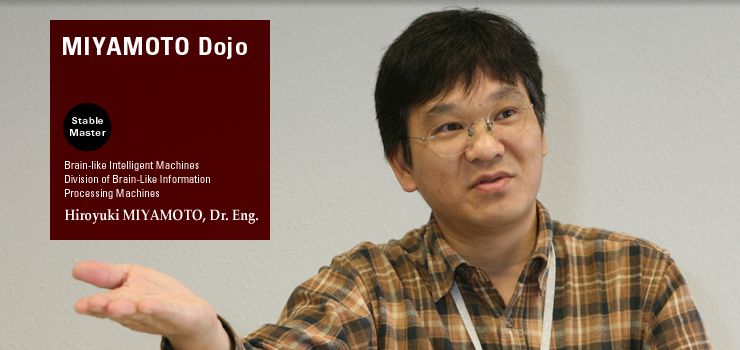 |
| |
 |
| One research theme of our laboratory is
elucidating the human motion control structure. When
a person moves his arm from one point to another, for
example, how does the brain process the information?
To find the answer, we are developing mathematical models
that reproduce human movements, verifying whether they
correspond to reality and applying the results to motor
control and learning. Another area of research is image
processing. Various devices such as motion catchers
are required for a robot to mimic human movement. Such
large-scale devices, however, are impractical for future
household robots. We are therefore studying image-processing
methods that will allow robots to recognize human movement
in their daily living environment using such common
equipment as ordinary cameras. |
|
 |
| This package allows even students from
other fields with no prior knowledge of image processing
to acquire the basics. We begin with a textbook on basic
image processing knowledge. But there are many aspects
of image processing for which book learning alone is
insufficient, such as how to extract the outline from
a reproduced image. Students are therefore given hands
on practice in various skills, including writing programs,
filming, and making simple devices for experiments.
We aim to impart the basic skills students will need
to use image-processing engineering technology as a
tool when they return to their respective labs and conduct
diverse experiments. |
|
|
|
|